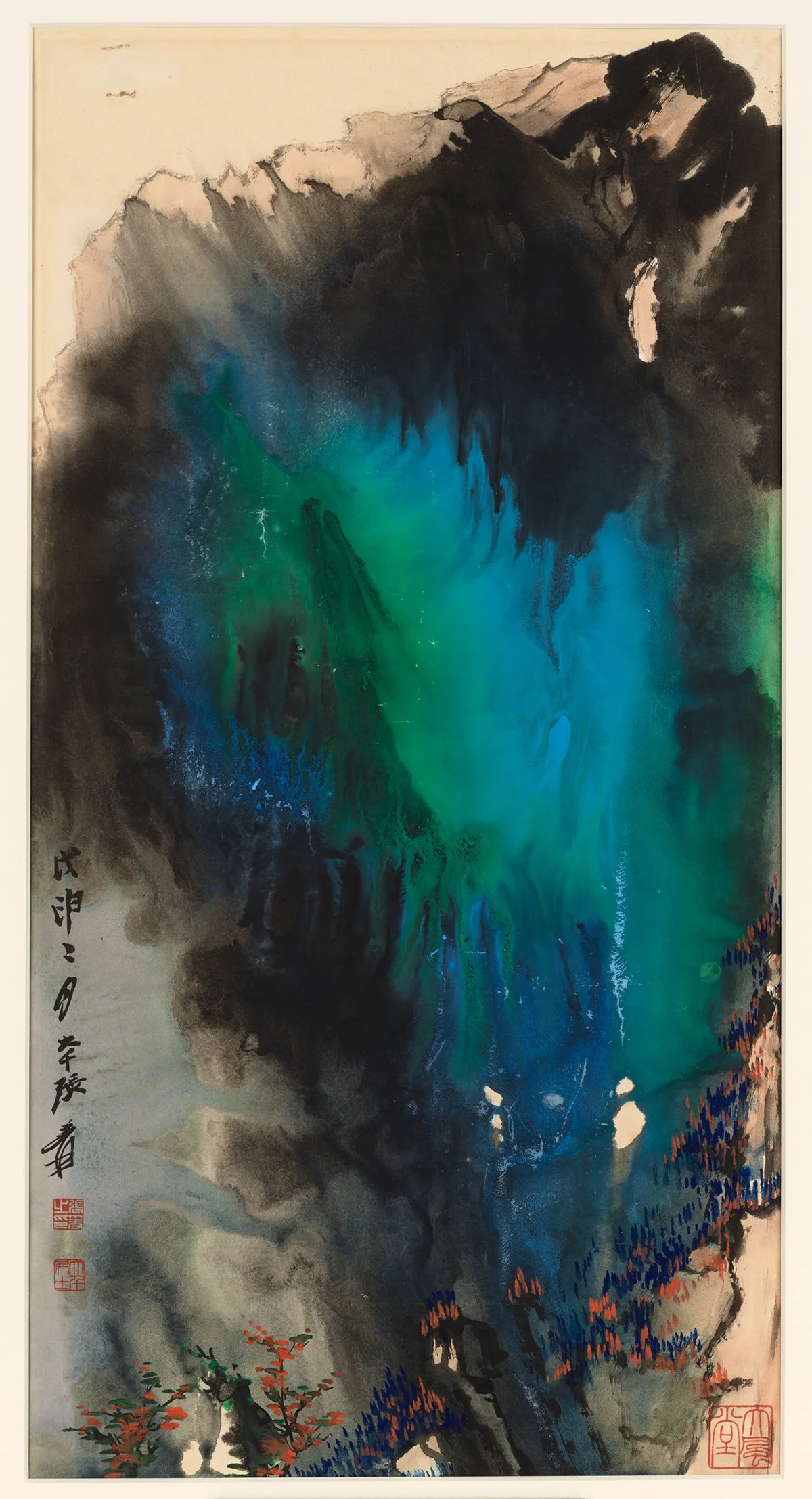A River of Ink
Bay Nature
January 6, 2020
Splash Waterfall, 1968. (Courtesy Asian Art Museum)
Curator Fan Jeremy Zhang at the Asian Art Museum of San Francisco has described Chinese painter Chang Dai-chien (or Zhang Daqian) as “the most accomplished Chinese painter of the 20th century.” Chang is a master of splashed-ink (pomo) and splashed-color (pocai) techniques. He studied traditional Chinese styles, particularly the literati style, which was inspired by calligraphy and often features monochromatic landscape paintings. But both his life and art were characterized by constant innovation, travel, and exile, the latter of which brought him to Northern California late in his career.
The Asian Art Museum’s current exhibition Chang Dai-chien: Painting from Heart to Hand looks at Chang’s time in Northern California in the 1960s and ‘70s, highlighting how influenced he was by the region’s landscapes.
Chang was born in Sichuan province in 1899. By age 20, he’d studied in both Kyoto, Japan, and Shanghai. He honed his craft by copying the work of master painters and became known as an inheritor of the literati style. But Chang also took inspiration from older artworks that were less valued by China’s educated class, such as the colorful Buddhist cave paintings in the Yulin and Mogao Caves in Gansu province, images whose flowing style greatly reinvigorated his painting.
When the Communist Party took control of China in 1949, Chang fled first to Hong Kong, then to India, Argentina, and Brazil. After exclusionary U.S. immigration laws eased, in 1968 Chang relocated to Carmel-by-the-Sea. In 1971, he moved to Pebble Beach, where he would spend the next seven years.
Though Chang was nearly 70 when he came to California, he still had not settled on a particular style. His technique continued to evolve. Here, says Zhang, “his art came close to total abstraction,” shedding the easy identifiability of subject matter evident in his earlier paintings.
Consider Chang’s 1967 Autumn Mountains in Twilight, created after an early visit to the state. He renders Yosemite’s El Capitan with a splash of colors that Zhang describes as “magically blended color washes.” The painting is over six feet high, the lower three-quarters full of dark, brooding atmospherics. What it depicts is unclear, except for the iconic tip of El Capitan, colored sunset red, peeking out of roiling cloud-like shapes. The painting manages to convey both the grandeur of El Capitan and the sense of awe, and even terror, it can inspire.
Another work from this period, Splash Waterfall, displays a landscape so abstract that, were it not for the plants in the foreground, you might confuse it for a river of ink. But as you look closer, you sense water and mountains in the amorphous turquoise, blue and black forms. Both works convey emotion, but whereas Autumn Mountains is commanding and energetic, Splash is sober and contemplative.
Chang was also inspired by scenes closer to home. The Mountains and Valley, from 1972, displays a landscape reminiscent of the foggy green coasts of Central California. According to Mark Dean Johnson, co-curator of Painting from Heart to Hand, Chang fell in love with the trees of the Monterey Peninsula; a specific cypress on a Carmel beach even become “a marker of his California period,” often appearing in his paintings. But never one to stay long in any particular place, Chang left California an
